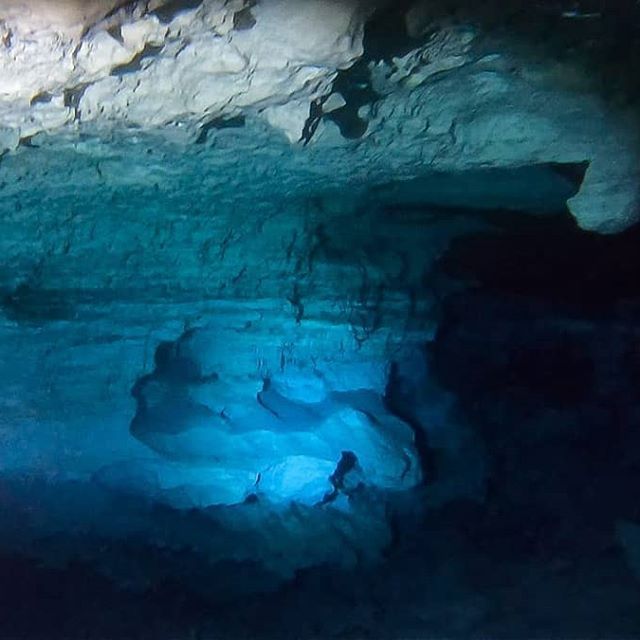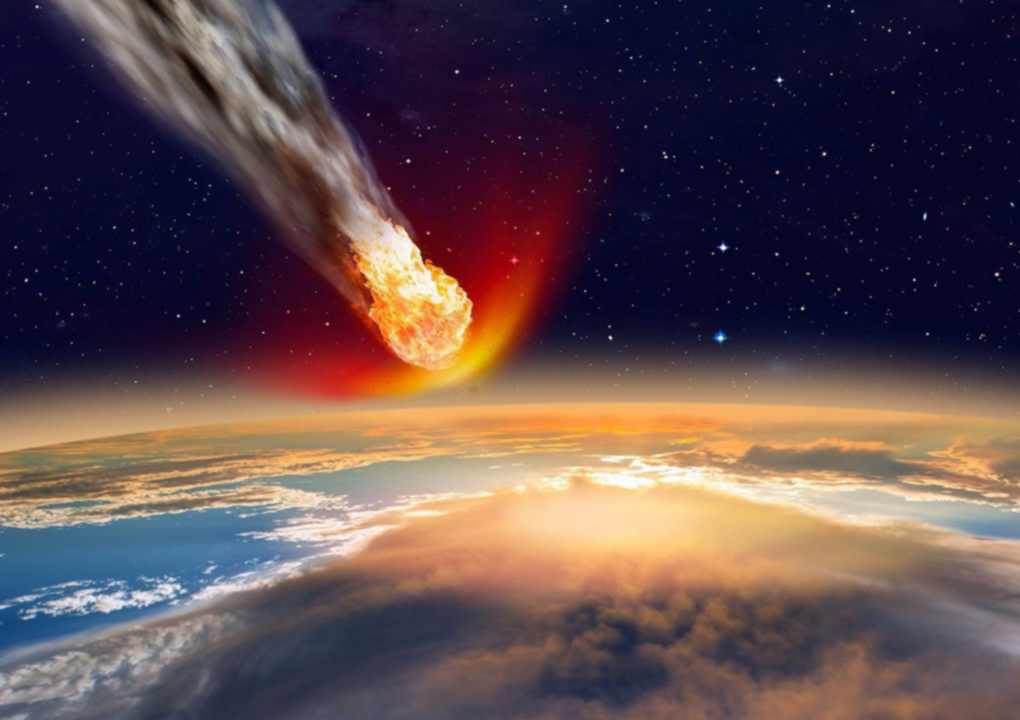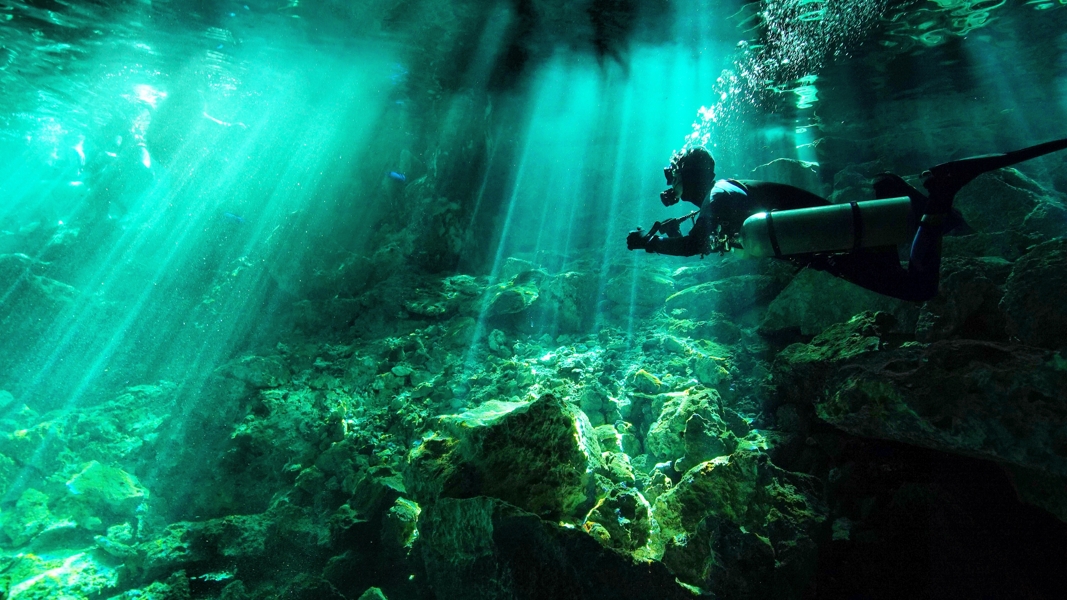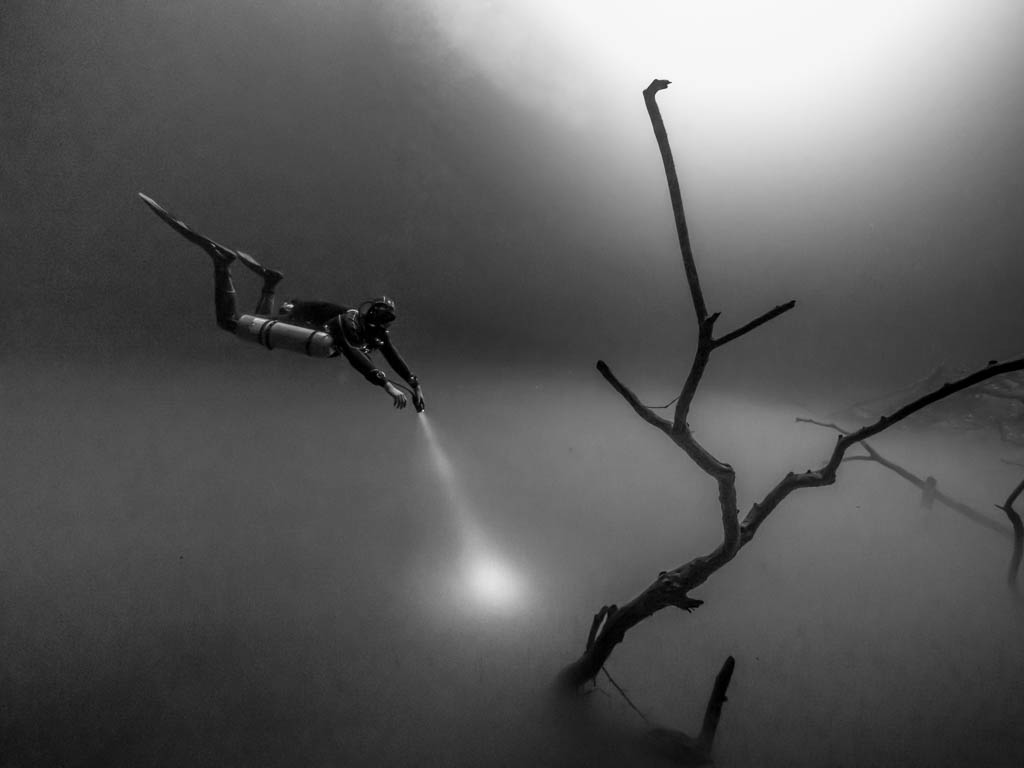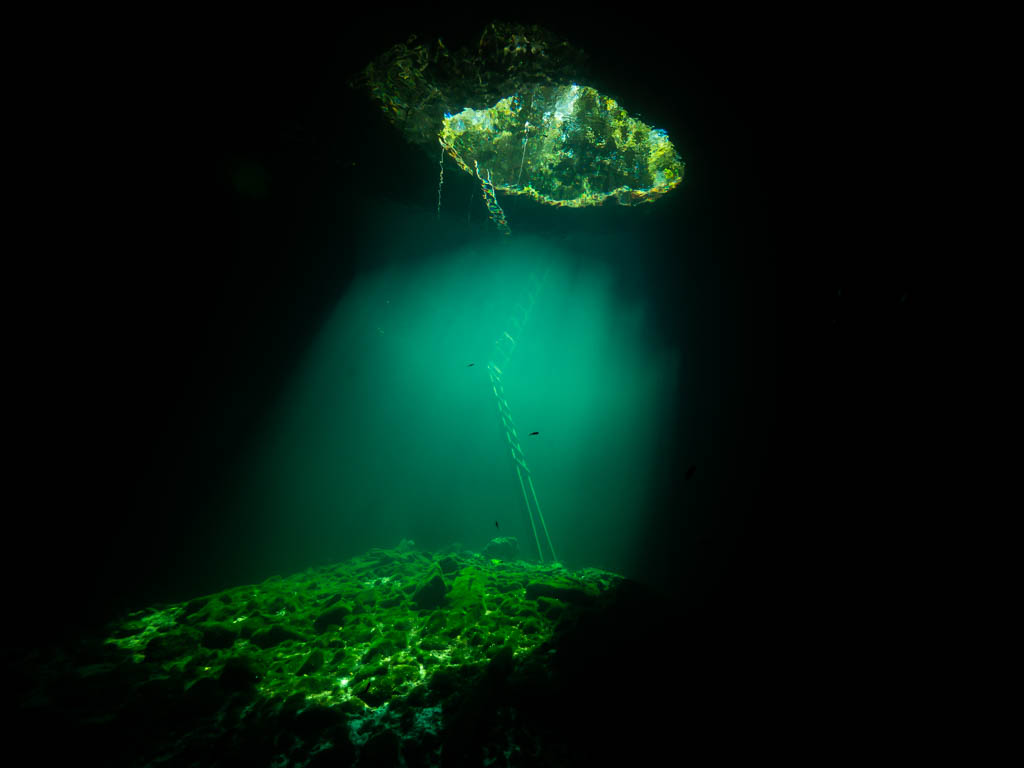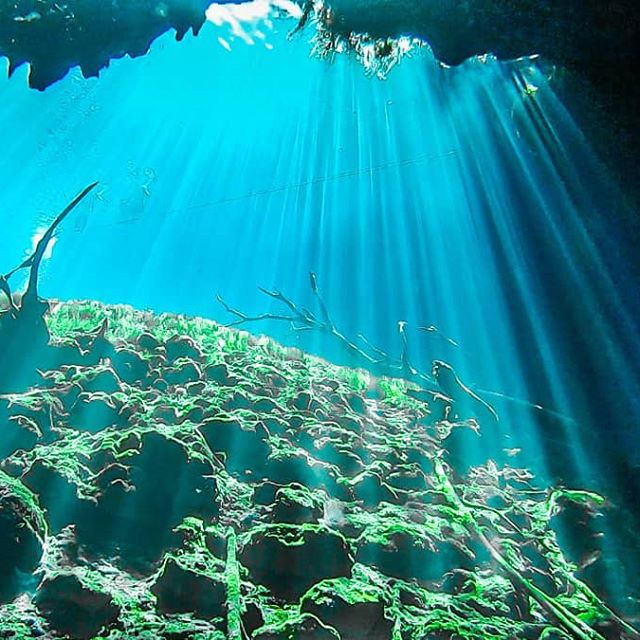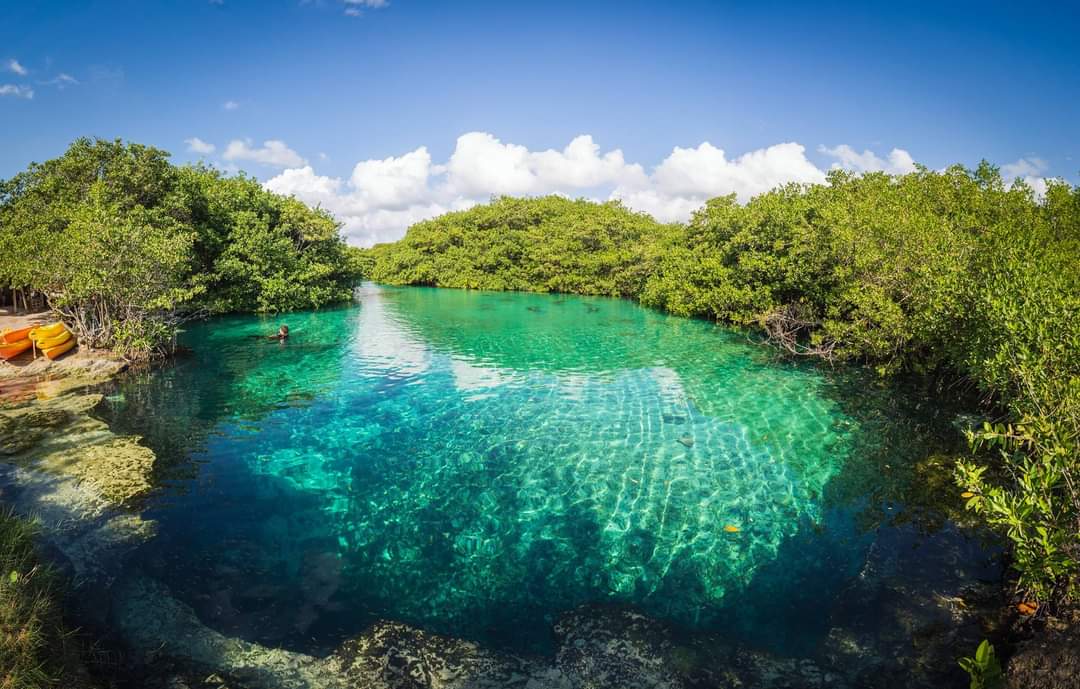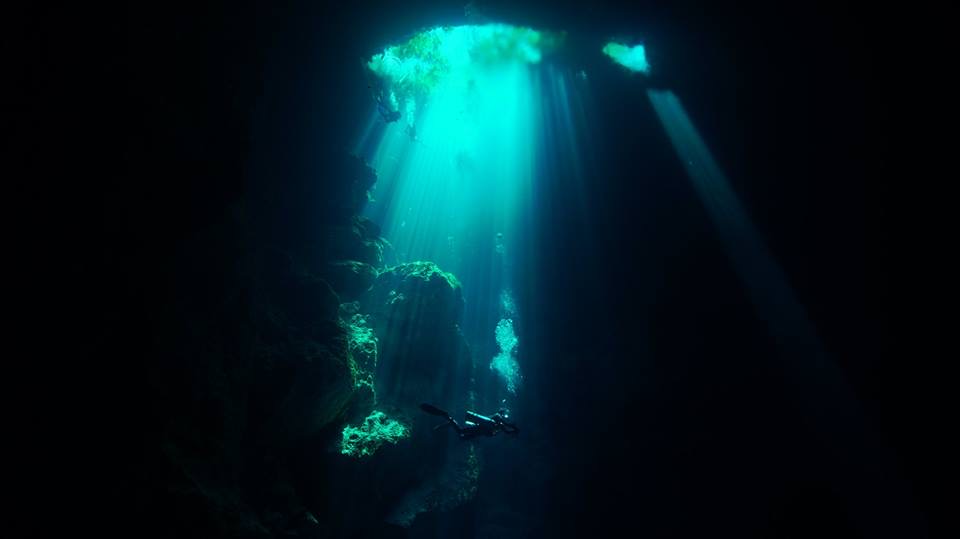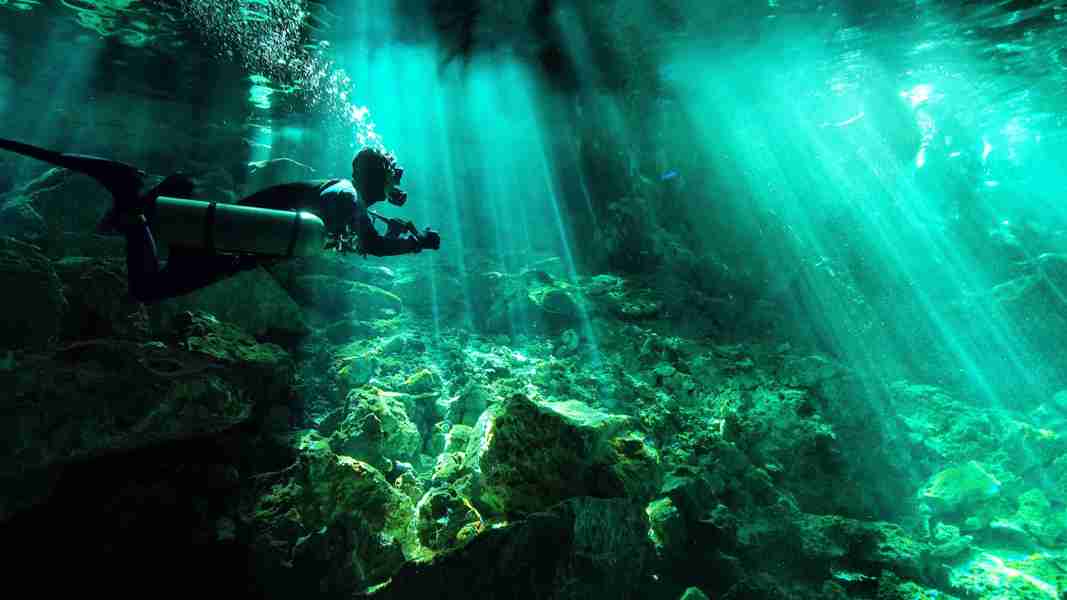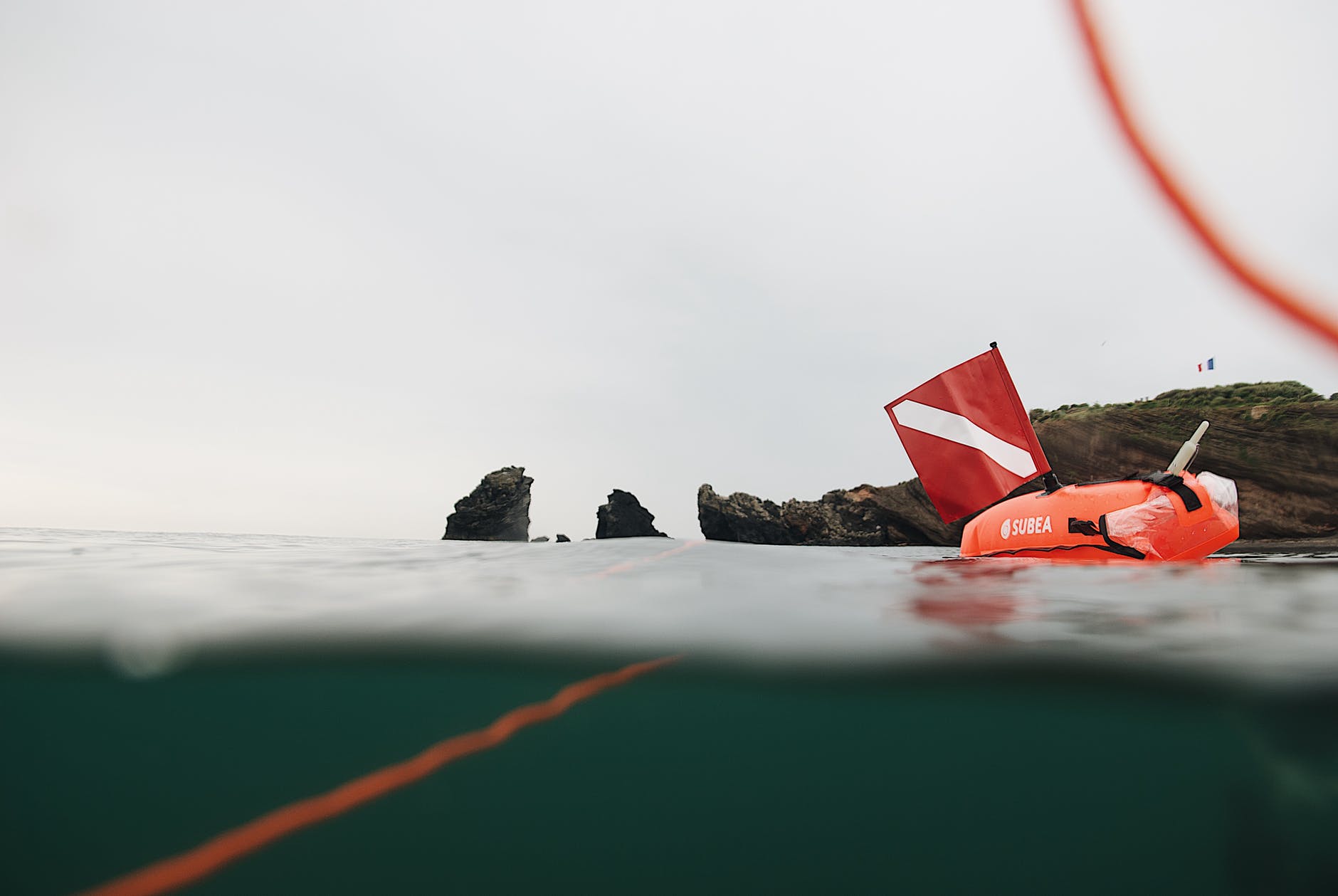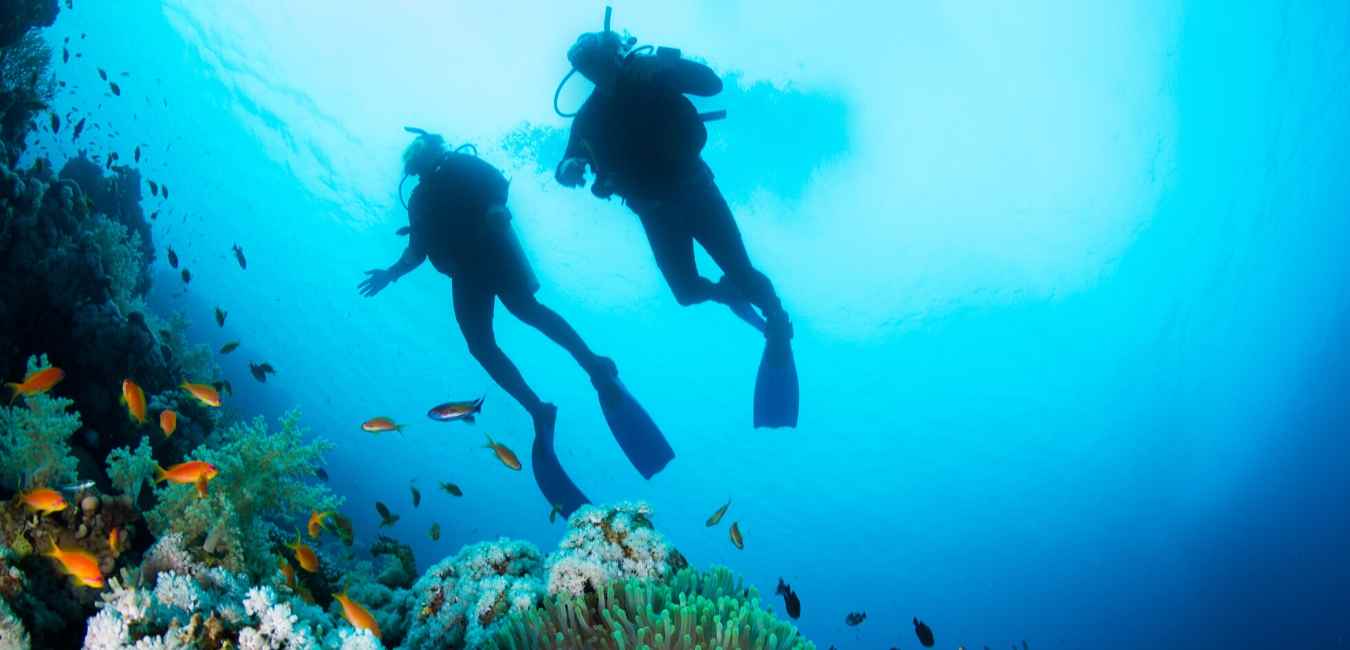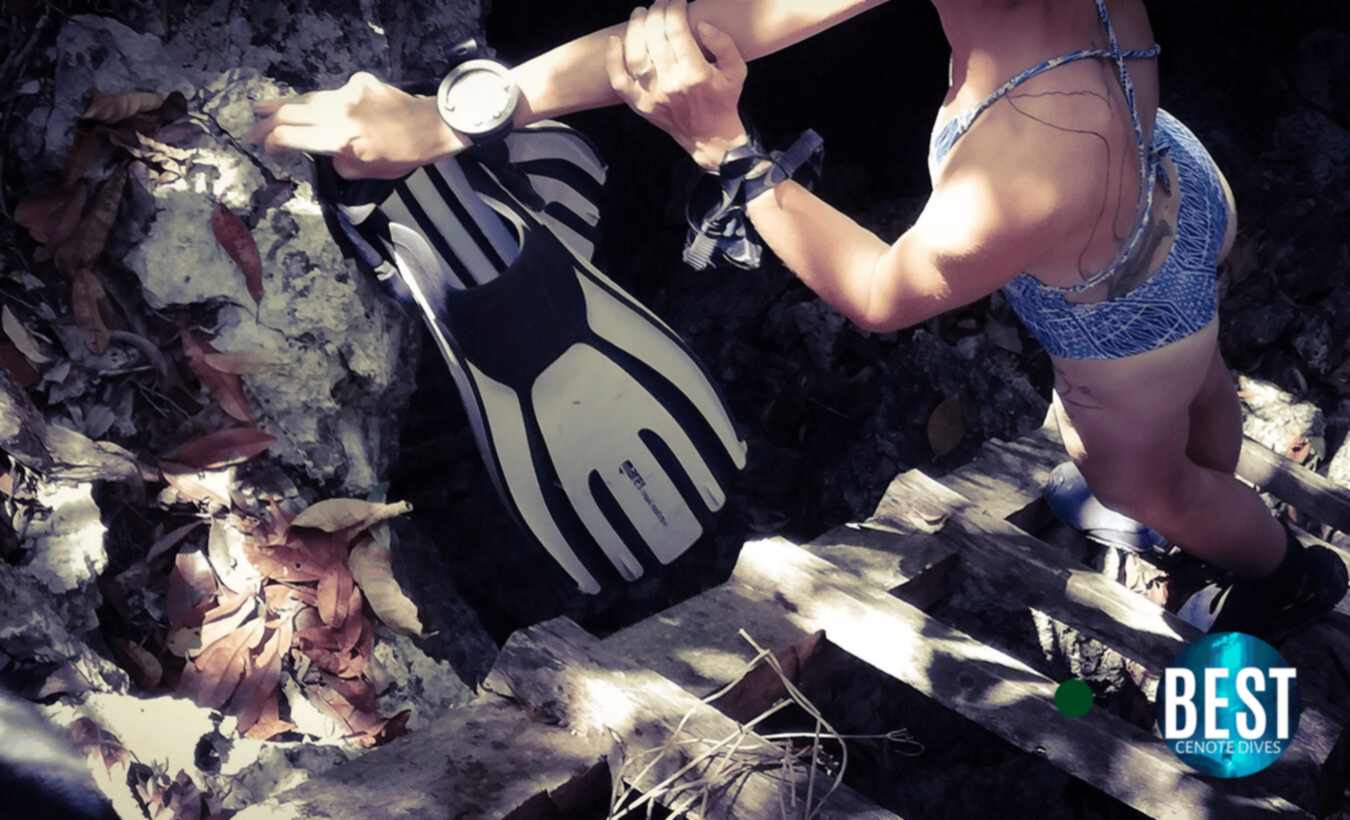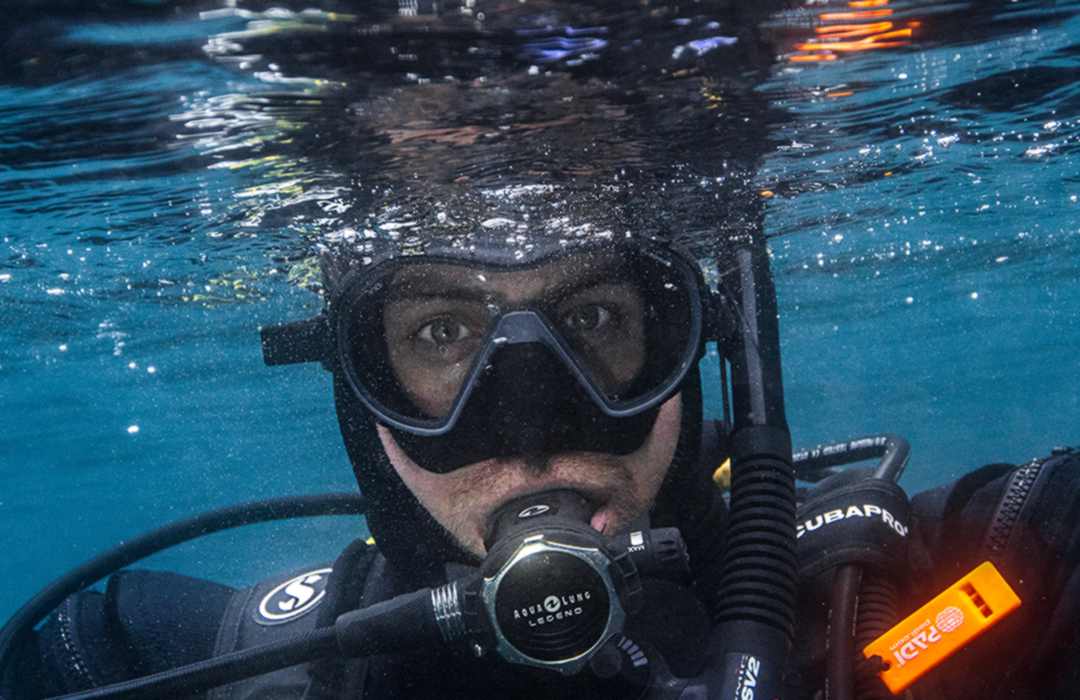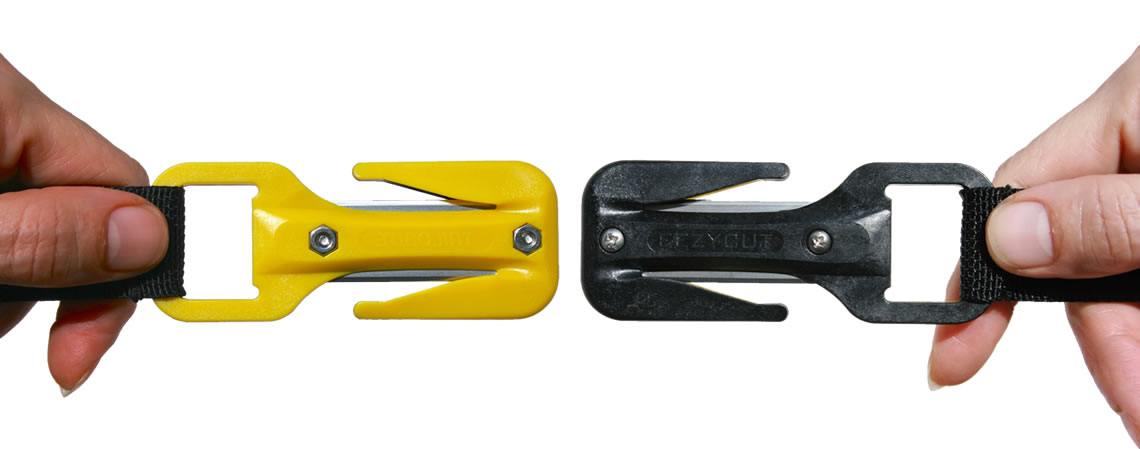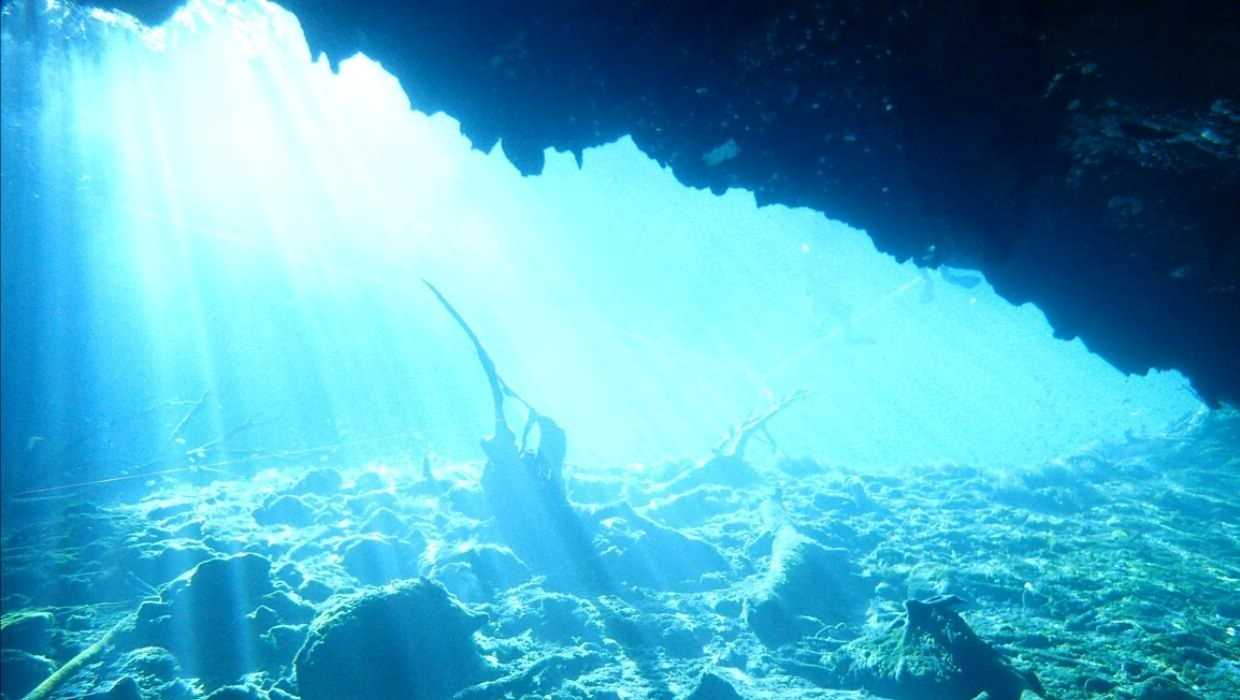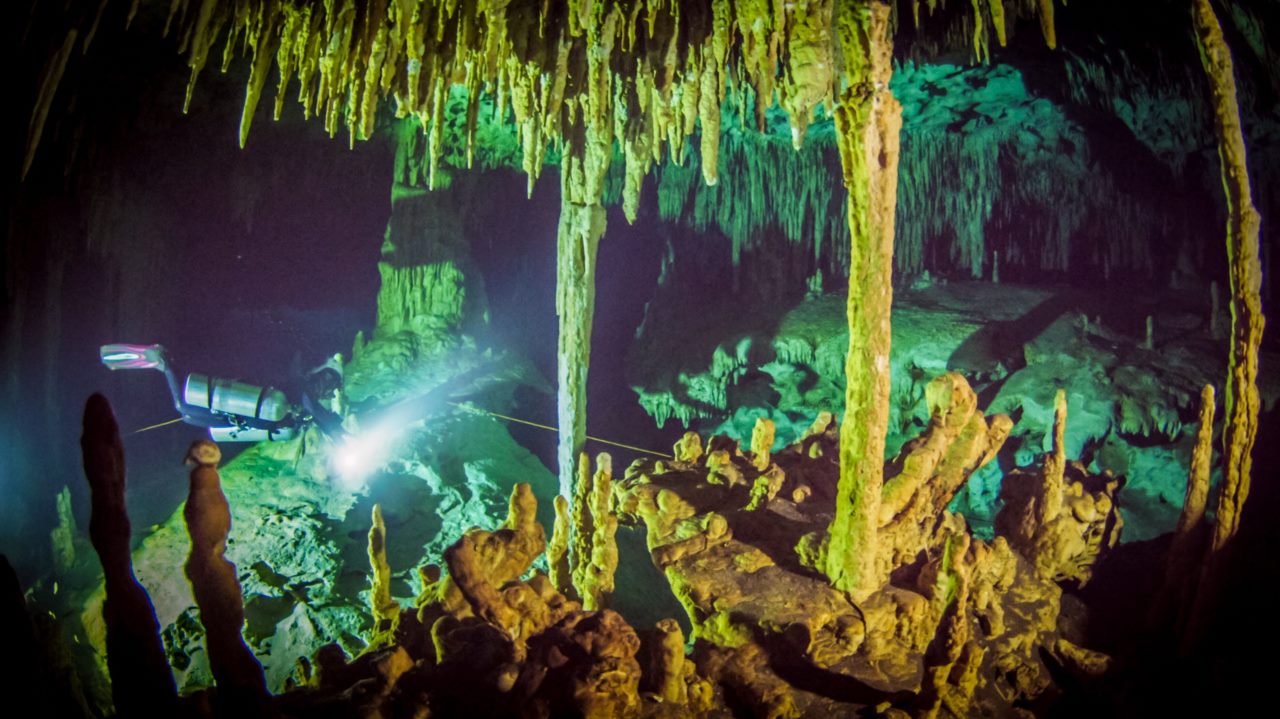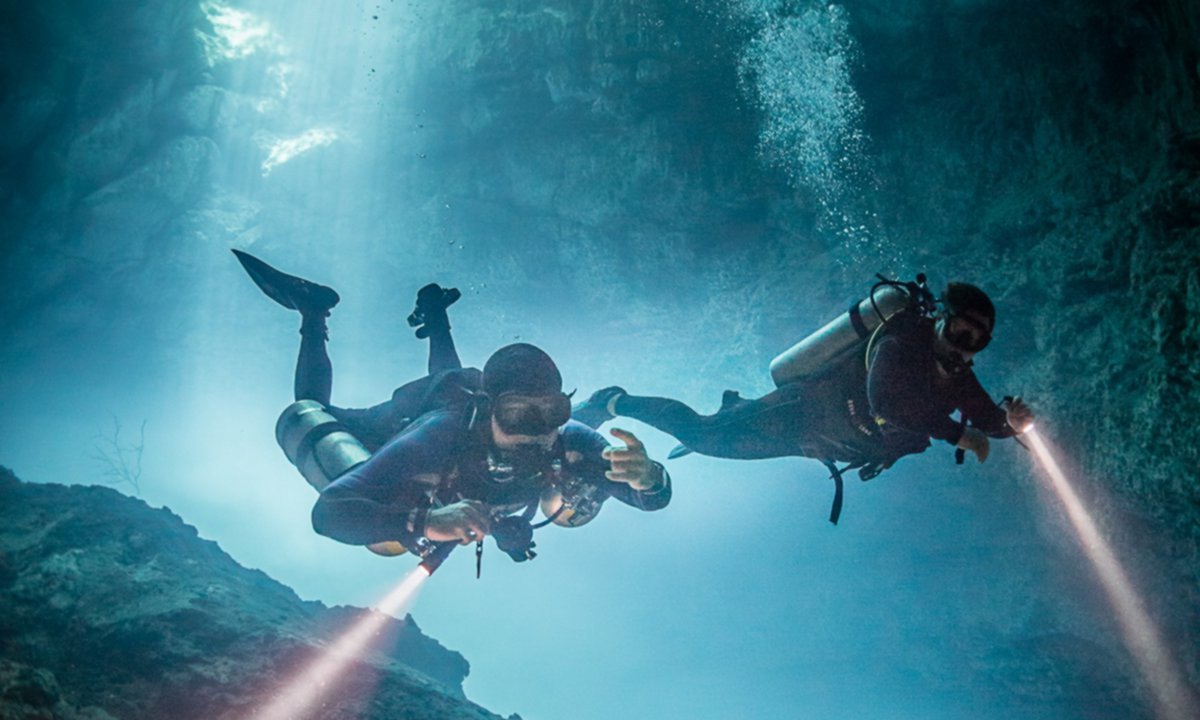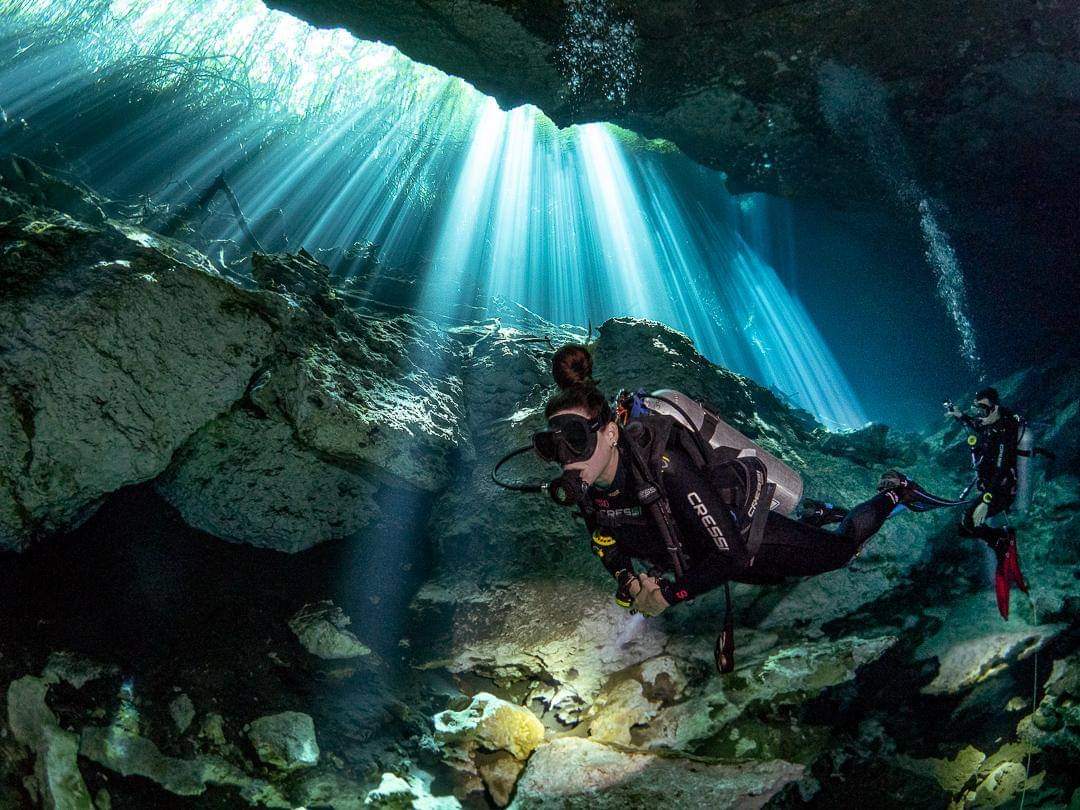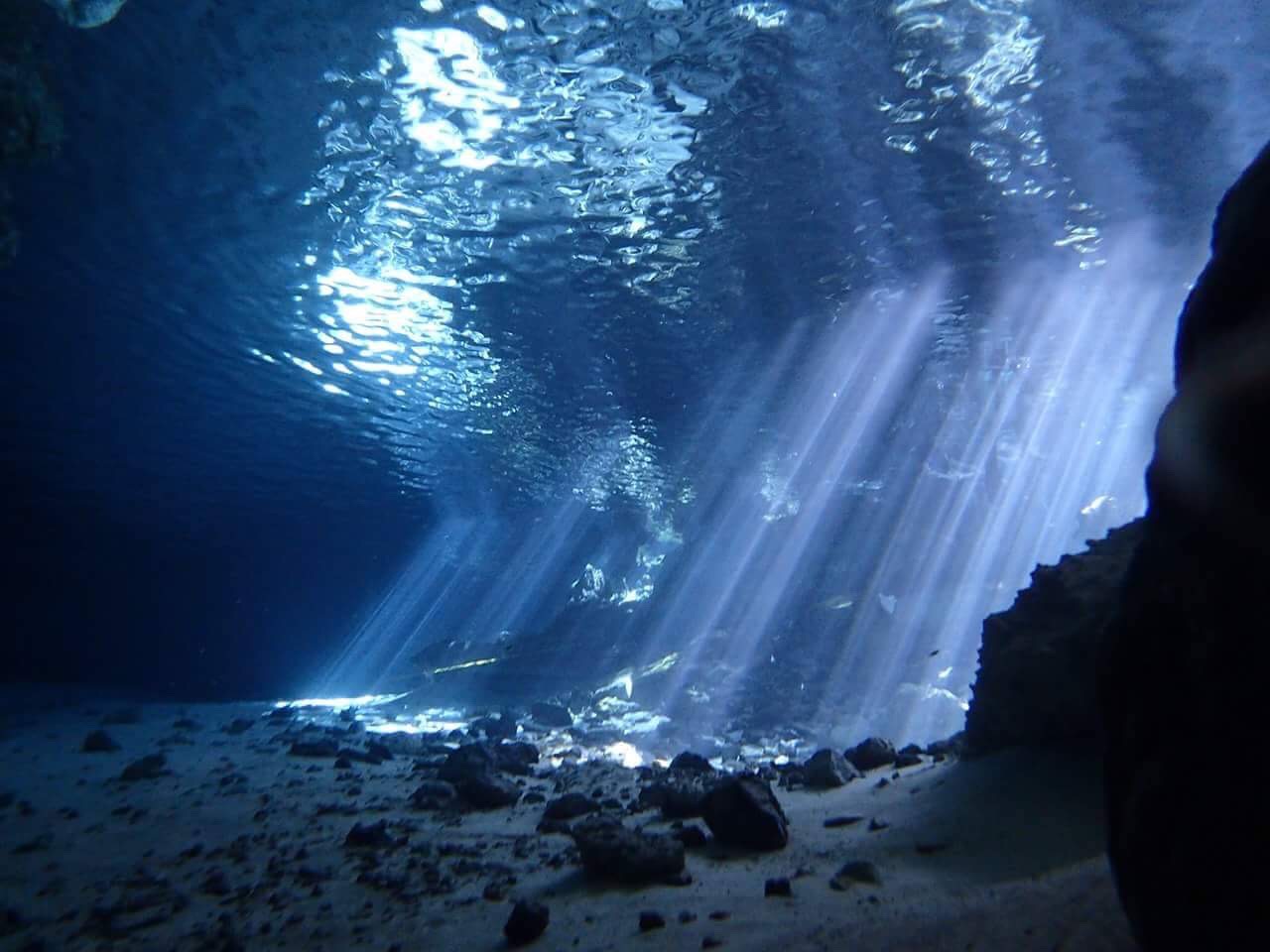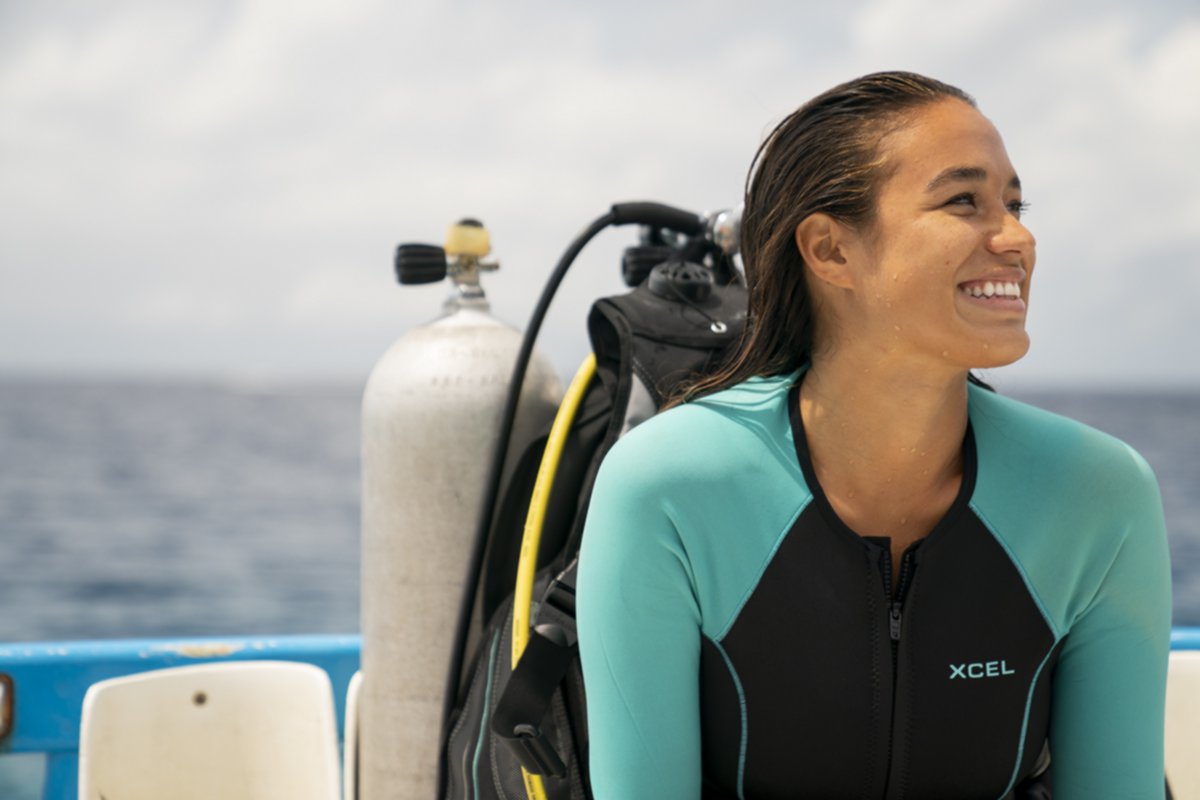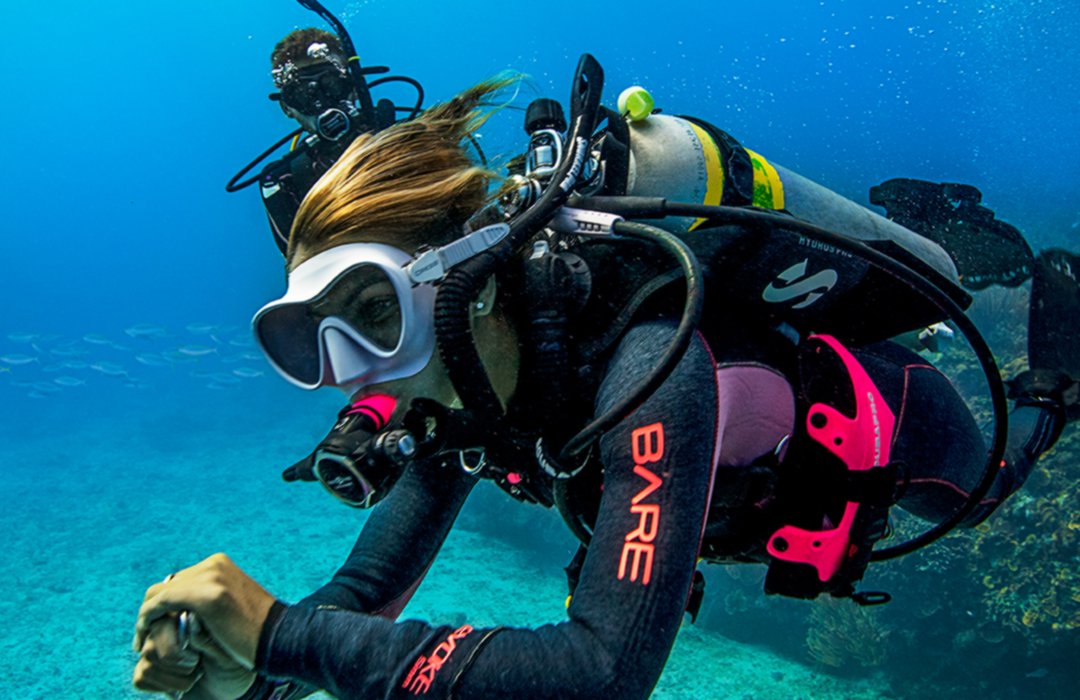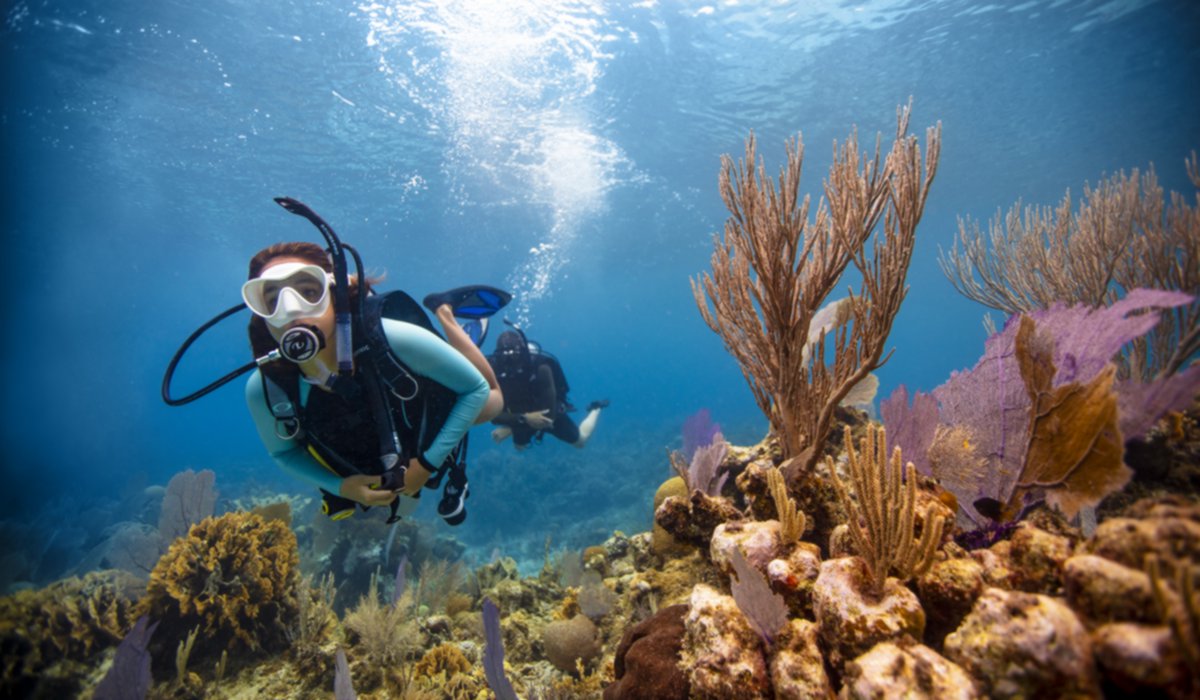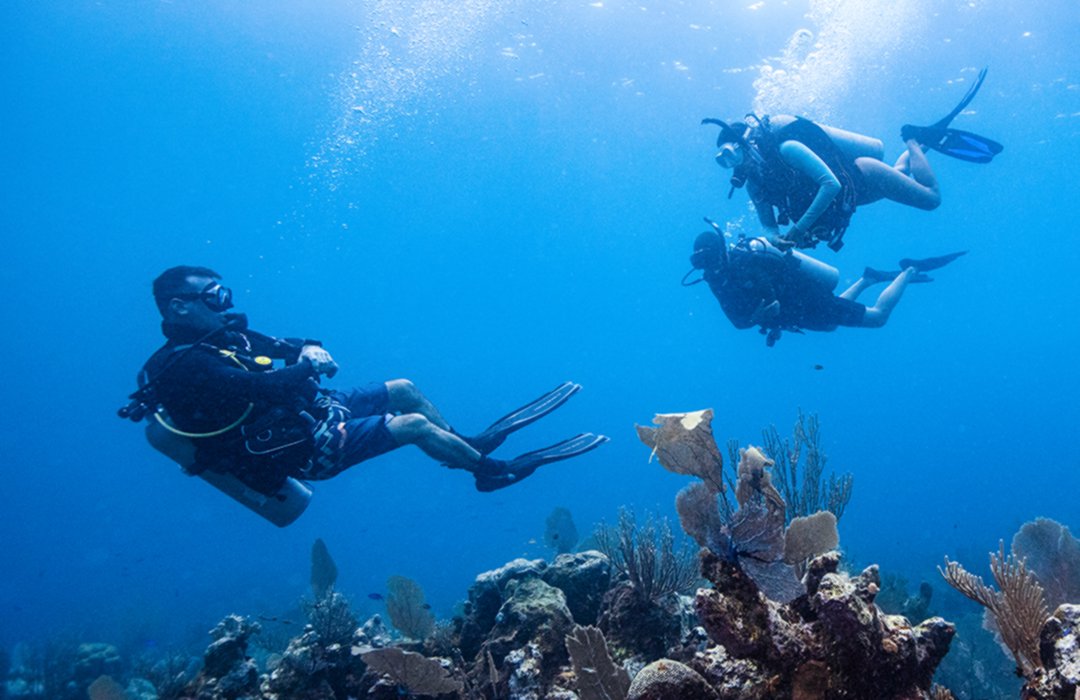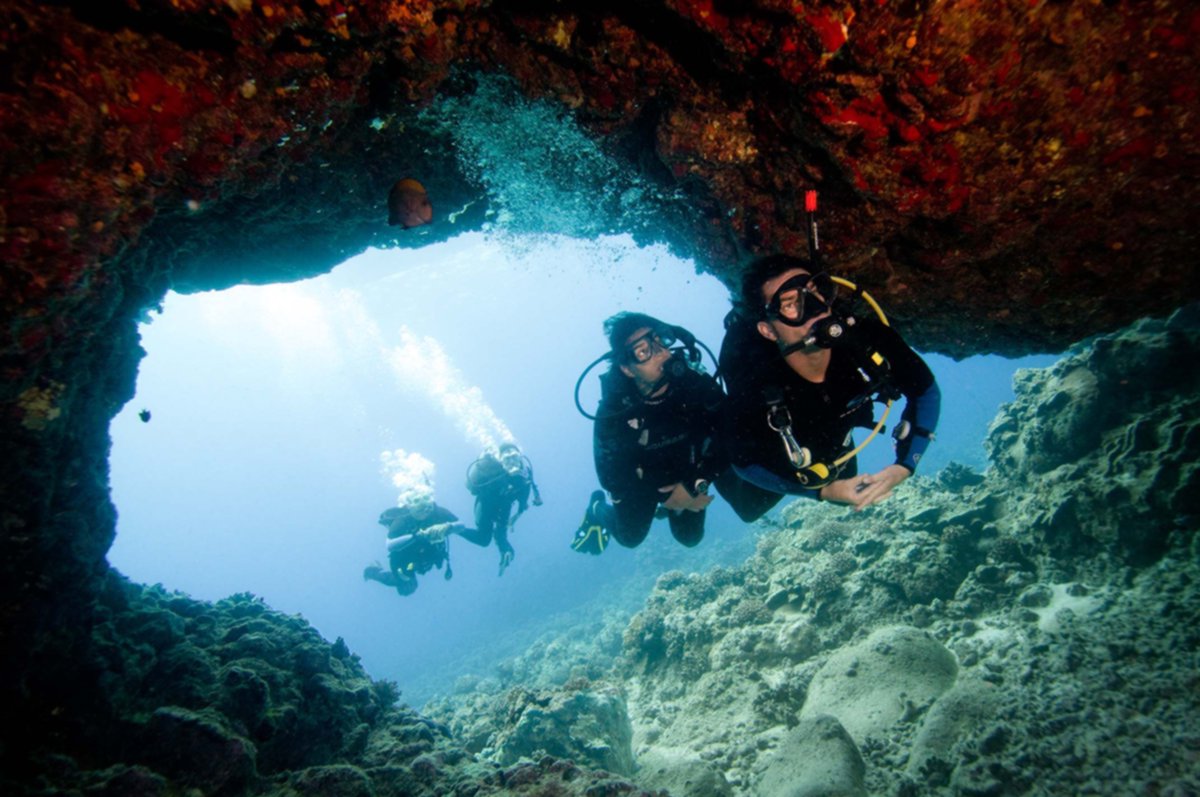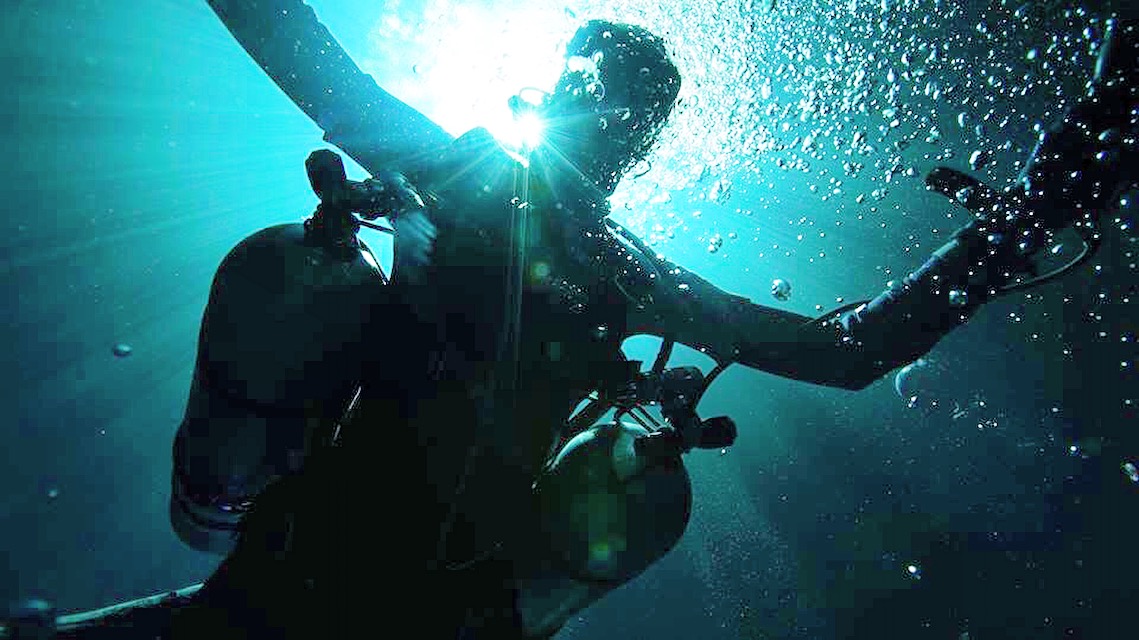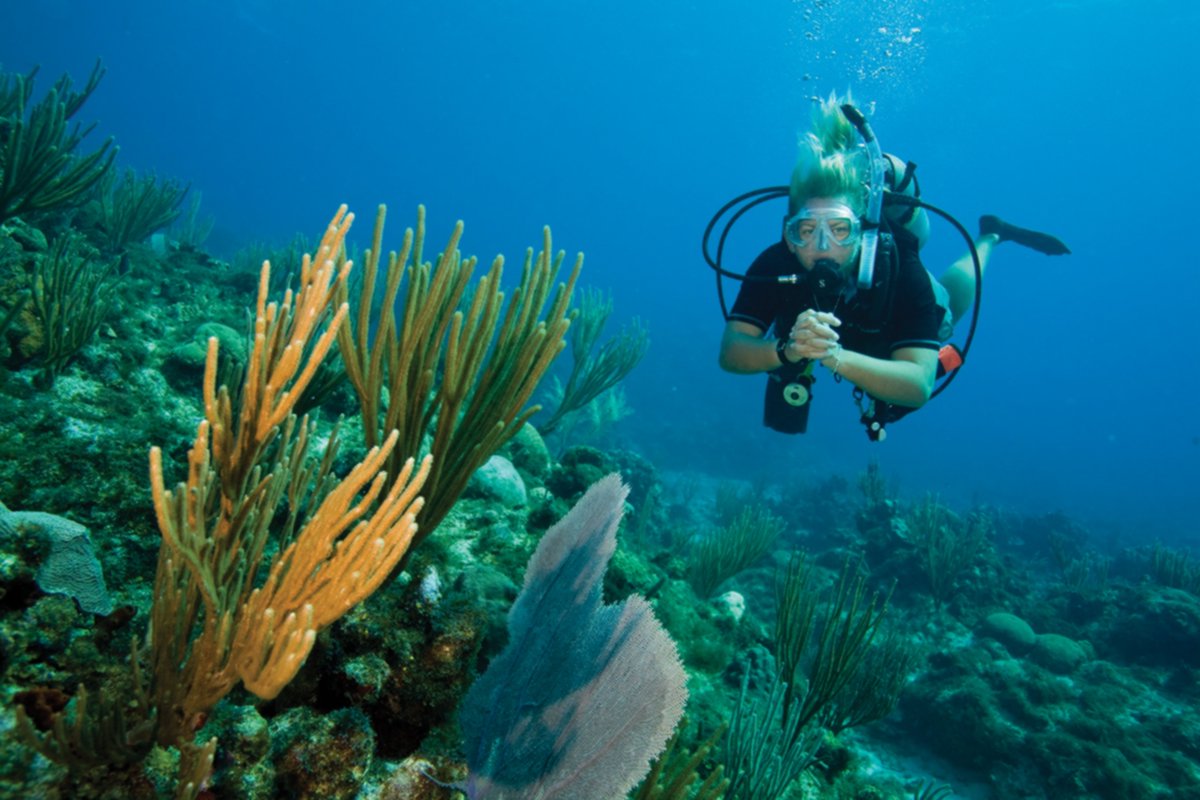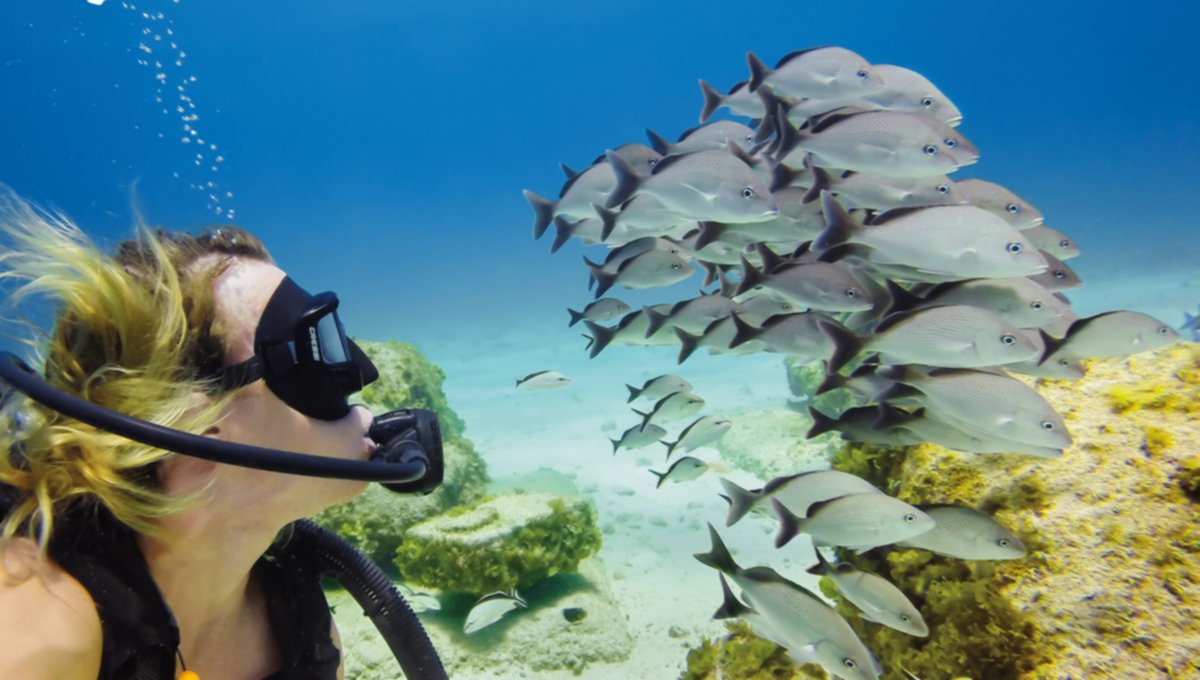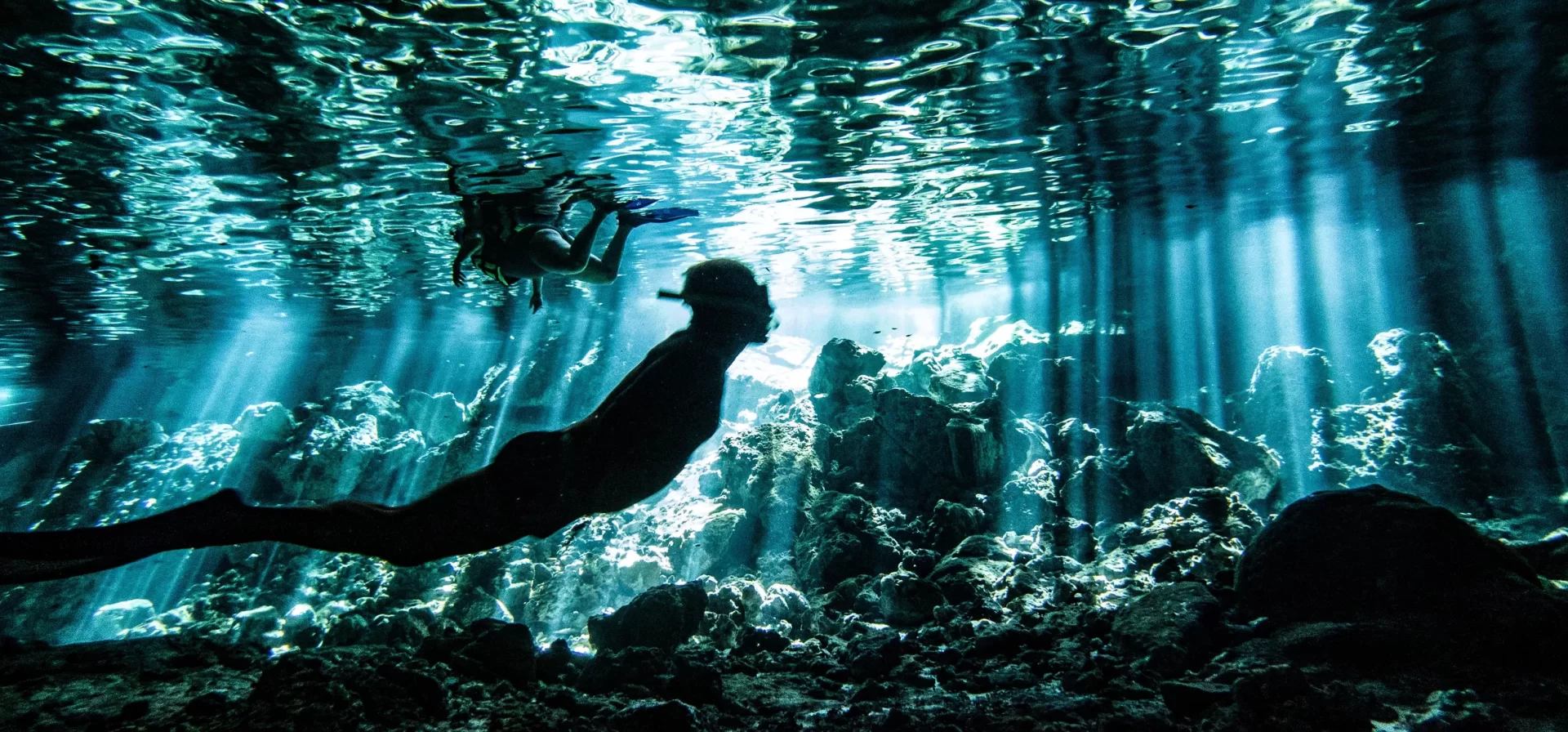Introduction
Cenote diving in Tulum is one of the most extraordinary scuba diving experiences in the world. These natural sinkholes, formed over thousands of years, offer crystal-clear visibility, stunning stalactites and stalagmites, and breathtaking light effects that create an otherworldly underwater adventure.
Unlike ocean diving, cenote diving takes place in freshwater caverns and caves, where you can witness haloclines (the blending of salt and freshwater), ancient rock formations, and even submerged Mayan artifacts. Whether you’re a certified open-water diver exploring cavern zones or an advanced cave diver navigating Mexico’s extensive underground river systems, Tulum’s cenotes provide an unforgettable experience.
In this guide, you’ll learn everything you need to know about cenote diving in Tulum, including:
✔️ What cenotes are and why they’re unique
✔️ The difference between cenote diving and cave diving
✔️ What to expect when diving in Mexico’s cenotes
✔️ Essential cenote diving equipment and safety guidelines
Cenotes are Mexico’s hidden underwater treasure—let’s dive in!
Contents
- What Are Cenotes?
- What Is Cenote Diving?
- What Is Cave Diving?
- What You’ll See While Cenote Diving
- Stalactites and Stalagmites
- The Halocline Effect
- Incredible Light Beams
- Ancient Fossils and Artifacts
- Equipment for Cenote Diving
- Specialized Equipment for Cave Diving
- Is Cenote Diving Safe?
- FAQ – Cenote Diving in Tulum
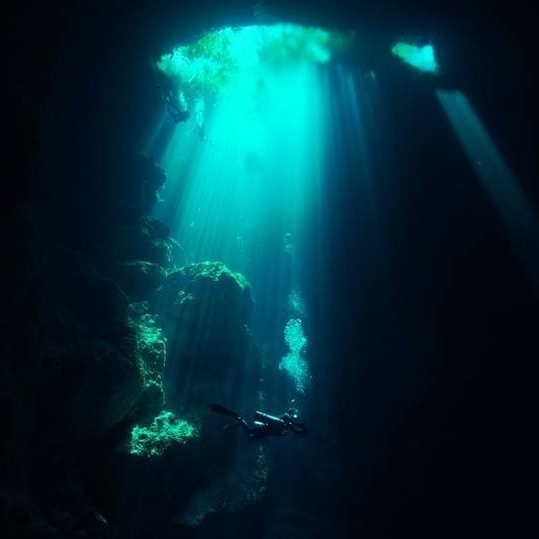
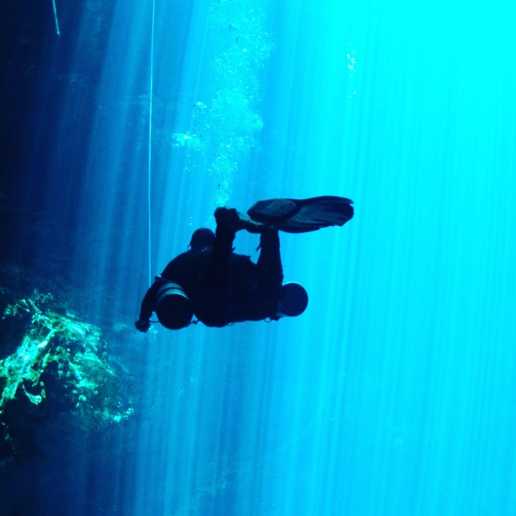
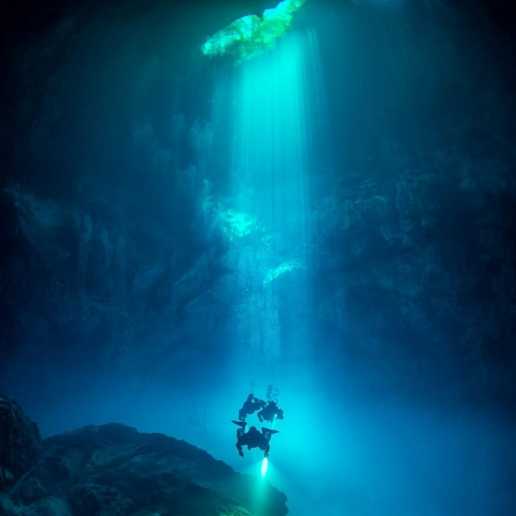
What Are Cenotes?
Cenotes are natural sinkholes formed by the collapse of limestone bedrock, exposing the underground rivers that run beneath the Yucatán Peninsula. These formations are part of a vast subterranean water system, once considered sacred by the Maya civilization.
Tulum and the surrounding areas have thousands of cenotes, ranging from open-air pools to deep caverns with stalactites, stalagmites, and crystal-clear water.
👉 Want to learn more about cenote history and geology? Click here.
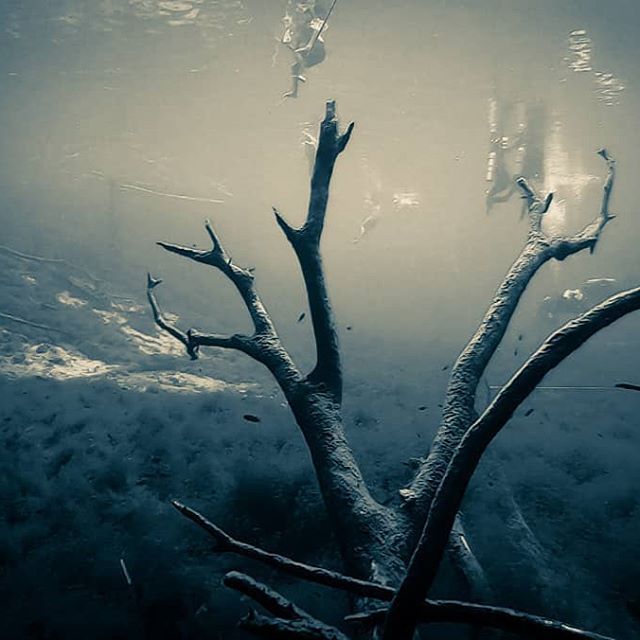
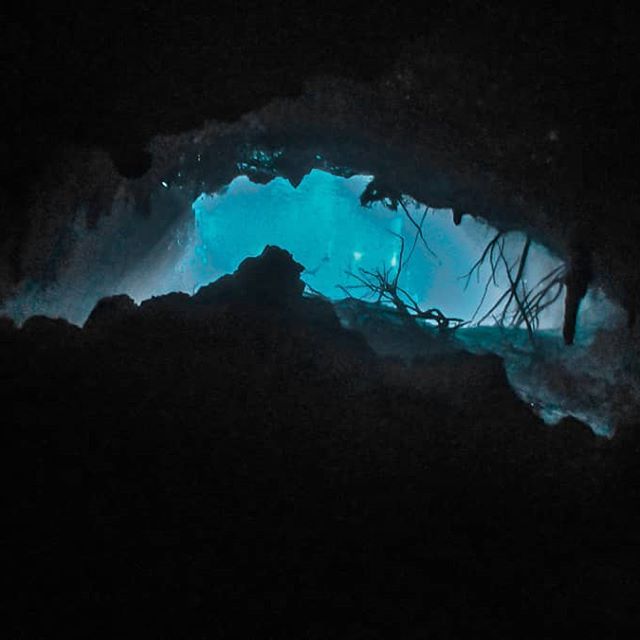
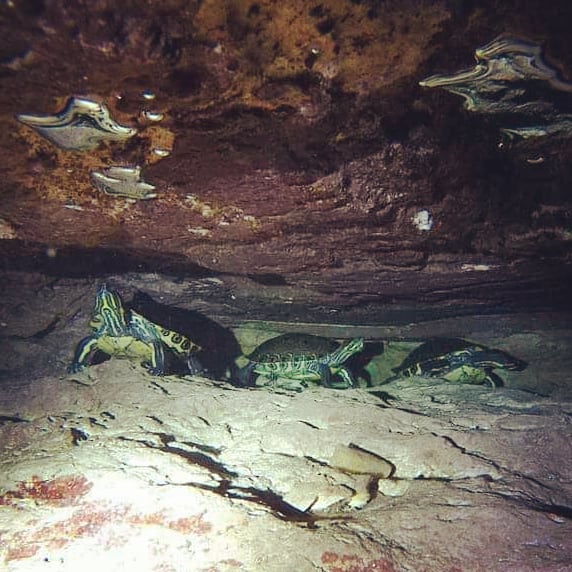
What Is Cenote Diving?
Cenote diving is a freshwater diving experience in the caverns and caves of Mexico’s Yucatán Peninsula. Unlike ocean diving, cenote diving features exceptional visibility, minimal currents, and stunning rock formations.
Dives take place in caverns (where natural light is still visible) or caves (for trained technical divers). Each cenote offers a different underwater landscape, making cenote diving one of the most varied and visually striking experiences for divers.
What Is Cave Diving?
Cave diving is an advanced form of cenote diving that takes divers beyond the cavern zone and into fully enclosed underwater cave systems. It requires specialized training, redundant air supply systems, and advanced navigation techniques.
Differences Between Cenote Diving and Cave Diving:
- Cenote Diving (Cavern Diving): Always within sight of natural light and open to recreational divers.
- Cave Diving: Requires full cave certification, allowing divers to explore the extensive underwater tunnels of Tulum.
👉 Learn more about cave diving training and safety here.
What You’ll See While Cenote Diving
Stalactites and Stalagmites
Cenotes are decorated with incredible rock formations that took thousands of years to develop. Stalactites (hanging from the ceiling) and stalagmites (rising from the floor) create breathtaking underwater structures.
The Halocline Effect
A halocline is a visual distortion that occurs when freshwater and saltwater mix in a cenote. When you pass through this layer, the water appears blurred or mirrored, creating a surreal experience.
👉 Learn more about haloclines and where to see them here.
Incredible Light Beams
Some cenotes have spectacular natural light effects, where sunlight pierces through small openings, illuminating the water in shades of blue and green. Cenotes like The Pit and Dos Ojos are famous for these cathedral-like light beams.
Ancient Fossils and Artifacts
Many cenotes hold prehistoric fossils, ancient Mayan pottery, and even skeletal remains. These discoveries make cenote diving a mix of exploration, history, and geology.
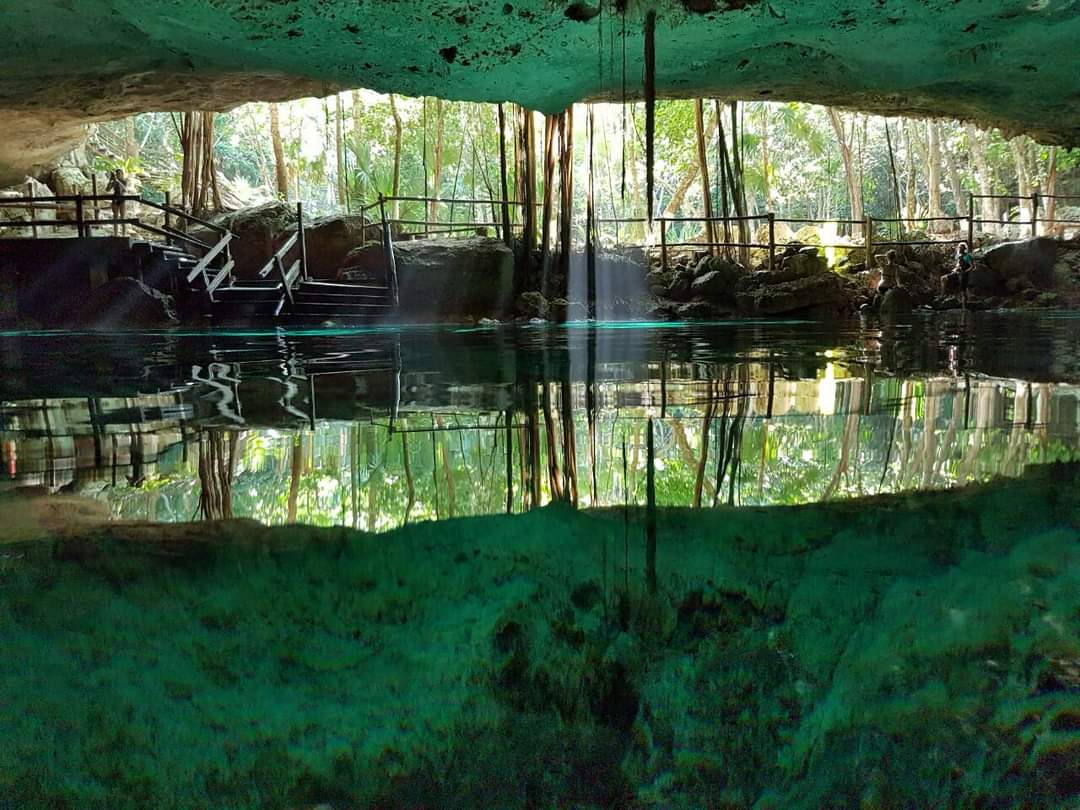
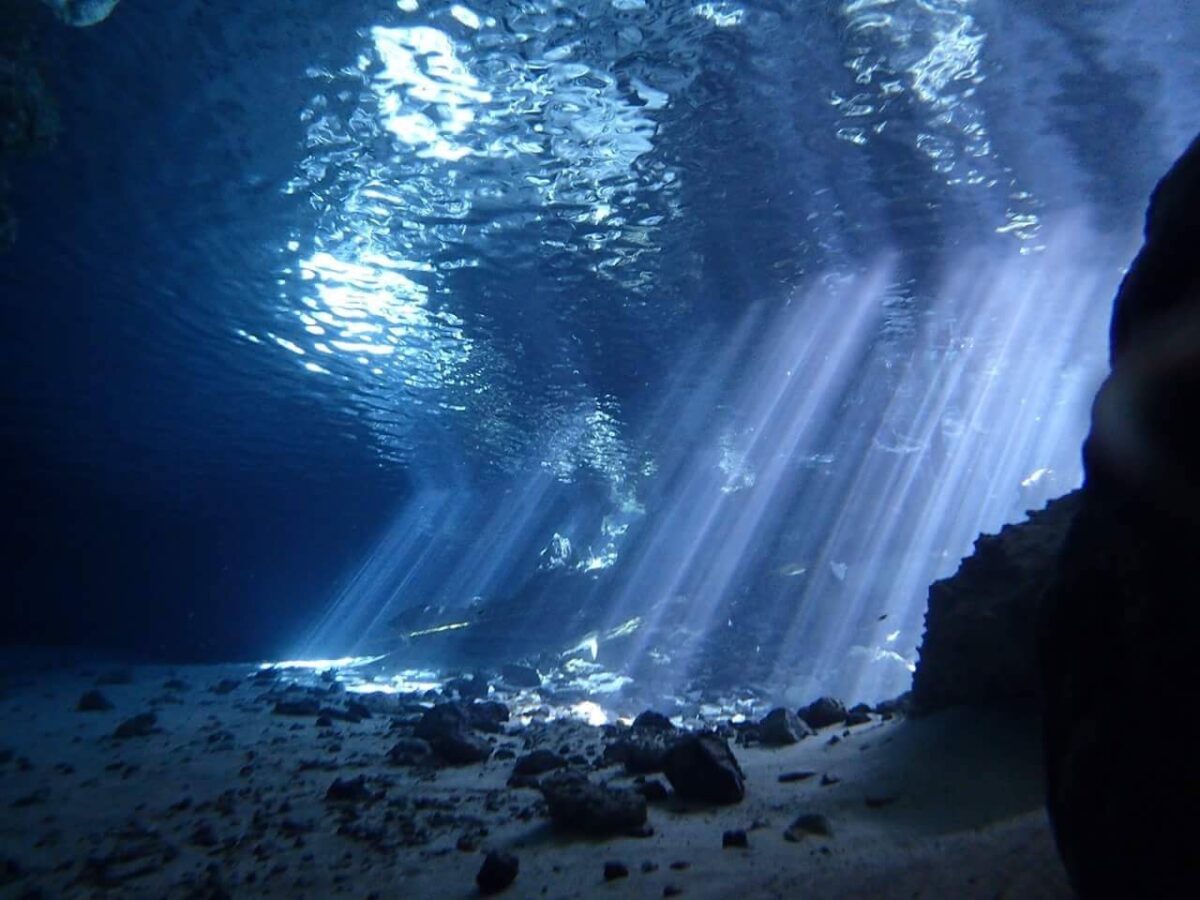
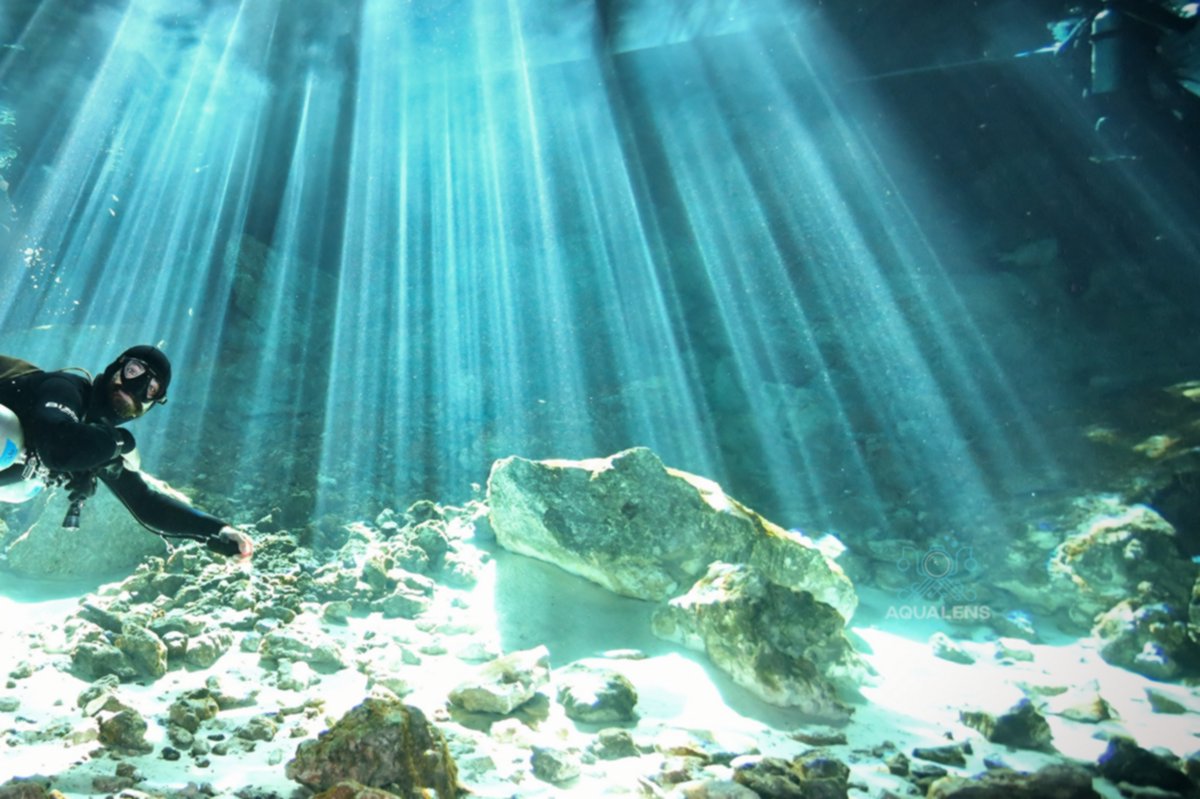
Equipment for Cenote Diving
Cenote diving requires specific gear to ensure safety and visibility in cavern environments. While standard dive equipment is used, a dive light is essential due to the overhead environment.
✅ Regulator & Alternate Air Source – A reliable system to ensure redundant air supply.
✅ Buoyancy Control Device (BCD) – Helps maintain neutral buoyancy to avoid disturbing sediment.
✅ Full Wetsuit (3mm to 5mm) – Cenote water temperatures range between 24–26°C (75–78°F).
✅ Primary Dive Light – Required for proper visibility in darker cenote sections.
Specialized Equipment for Cave Diving
For those venturing into cave diving, additional safety equipment is required due to the overhead environment and lack of direct access to the surface.
✅ Primary Dive Light – A high-powered light is essential for navigating the darkness.
✅ Backup Lights – Two additional lights are required in case of failure.
✅ Reel & Guide Line – Used for navigation, ensuring a clear path back to the entrance.
✅ Sidemount Configuration – Common in cave diving for better streamlining in tight spaces.
👉 Want a detailed guide to cave diving equipment? Click here.
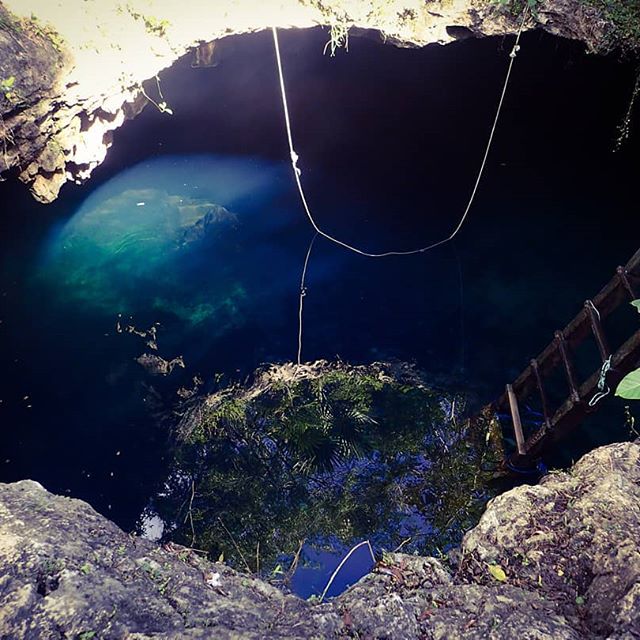
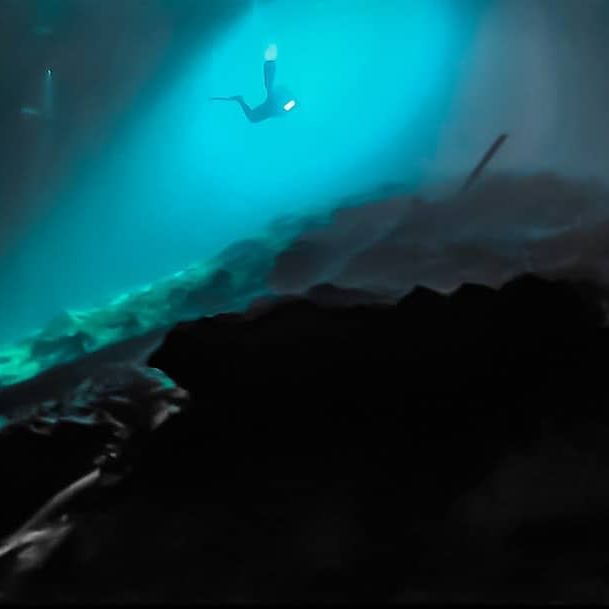
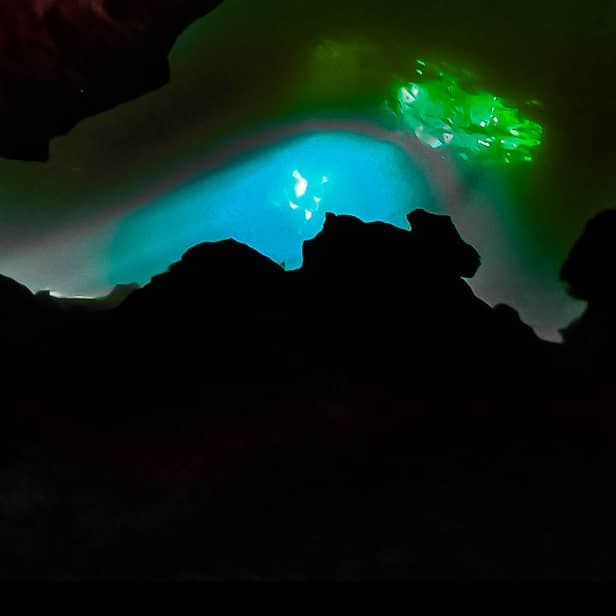
Is Cenote Diving Safe?
Yes! Cenote diving is very safe when following proper guidelines and diving with an experienced guide. Although cenotes are overhead environments, diving is conducted in controlled, well-mapped areas.
Key Safety Guidelines:
✔️ Always dive with a certified cenote guide.
✔️ Follow the “rule of thirds” for air consumption.
✔️ Maintain neutral buoyancy to avoid stirring up sediment.
✔️ Respect the cenote environment—avoid touching formations.



FAQ – Cenote Diving in Tulum
Do I need special certification to dive in cenotes?
No, most cenote diving is available to certified Open Water divers. However, cave diving requires advanced certification and specialized training.
How deep are cenotes?
Cenotes typically range from 5 to 30 meters (16 to 98 feet) deep, though some, like Angelita, can reach depths of over 60 meters (197 feet).
What’s the water temperature in cenotes?
Cenotes maintain a constant temperature of 24–26°C (75–78°F) year-round, making them perfect for diving in any season.
Is cenote diving affected by weather?
No, since cenotes are protected underground environments, they remain unaffected by rain, waves, or currents, ensuring excellent visibility regardless of the weather.
What marine life can I see in cenotes?
While cenotes aren’t home to large marine animals, you may encounter freshwater shrimp, small fish, and even blind cavefish in certain cenotes.
Are cenotes dangerous?
Cenote diving is safe when proper training, safety procedures, and an experienced guide are in place. Always dive with a professional to ensure a secure and enjoyable experience.
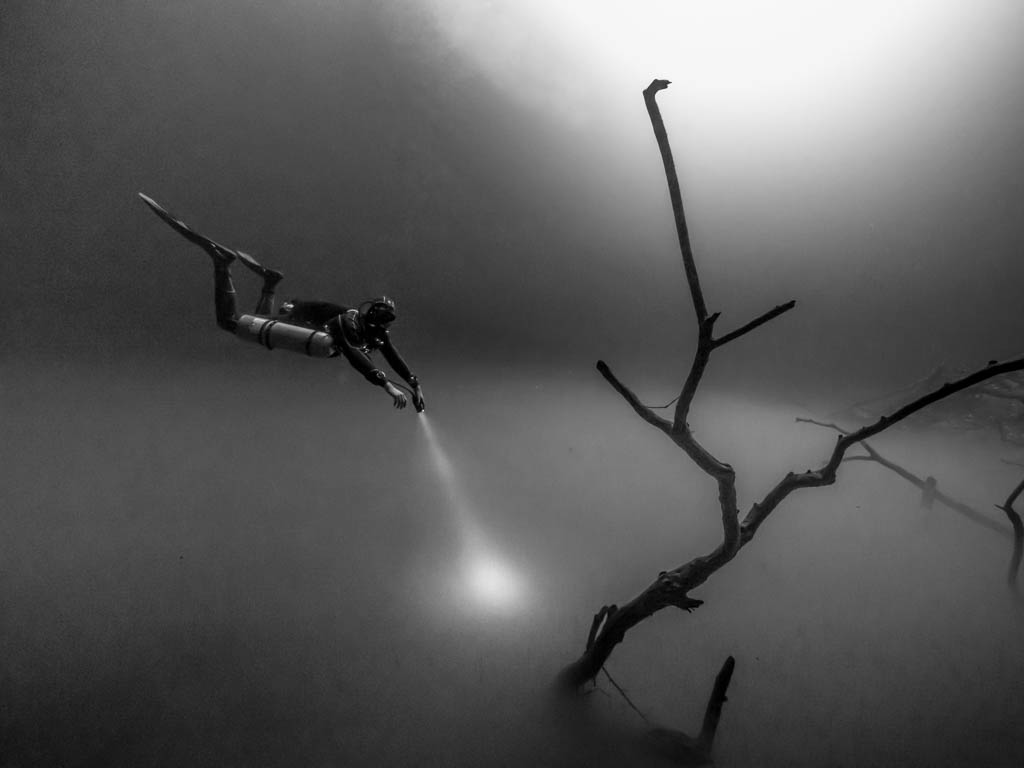
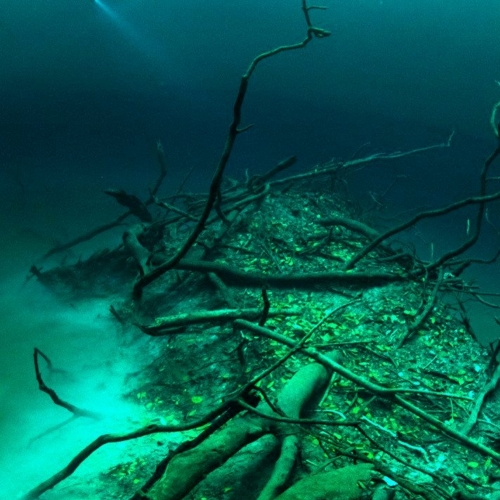
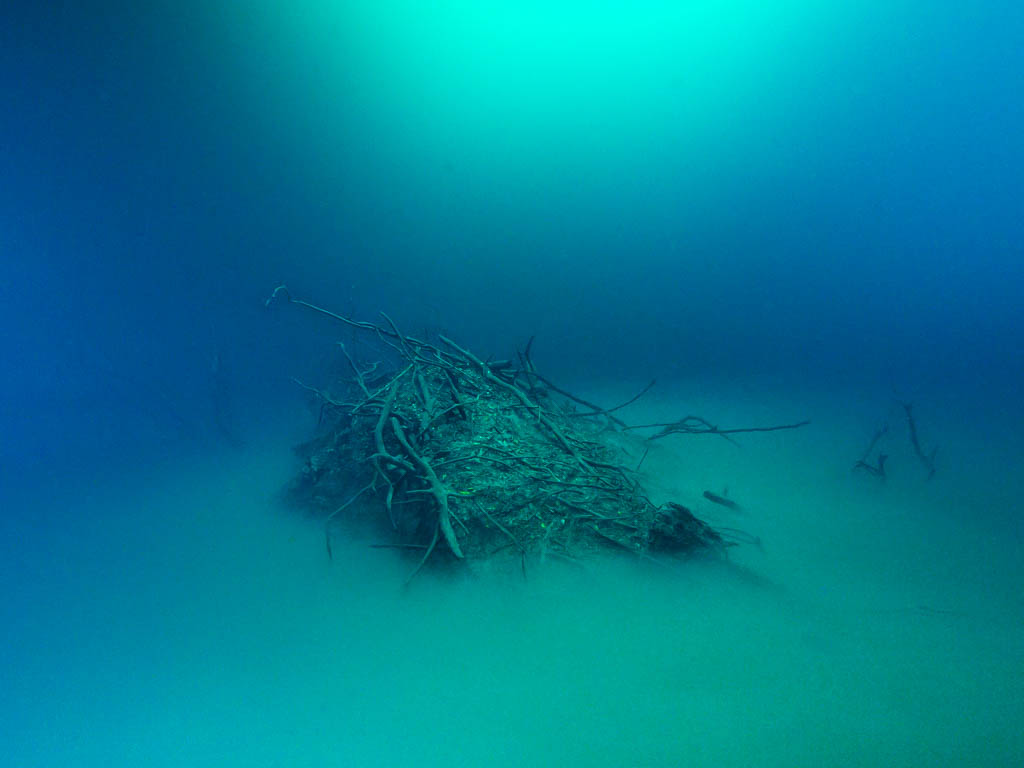
Final Thoughts
Cenote diving in Tulum is a breathtaking experience, offering unmatched visibility, stunning rock formations, and a unique insight into the Earth’s history. Whether you’re a beginner exploring the cavern zones or a certified diver ready for cave exploration, cenotes offer something truly unforgettable.
